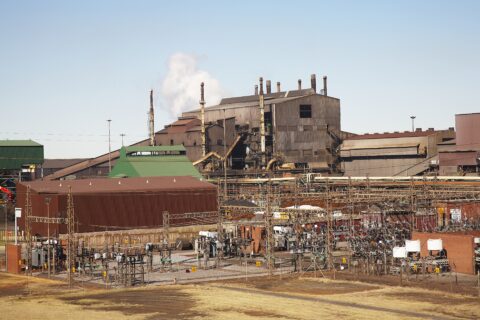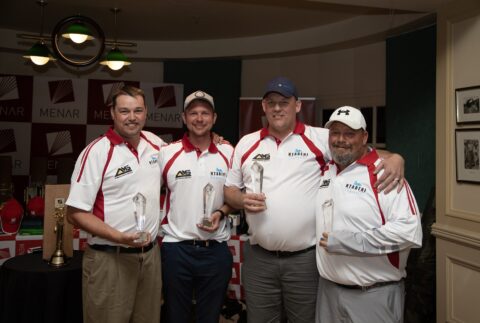SA Mining
Water Conservation
By: Nelendhre Moodley
As South Africa’s water crisis deepens, the foremost question remains: are measures that have been put in place to address the situation moving apace? SA Mining recently caught up with the CEO of the Federation for a Sustainable Environment (FSE) Mariette Liefferink to unpack some of the most recent developments related to the National Eutrophication Strategy and acid mine drainage.
National Eutrophication Strategy
One of the key developments under way includes the development of a National Eutrophication Strategy. According to Liefferink, the Department of Water and Sanitation (DWS) is in the process of developing the strategy, which will provide guidance to the DWS and the water sector at large on strategies to avoid, reduce, mitigate and manage the effects of eutrophication of South Africa’s water resources.
“Sixty-two percent of South Africa’s large dams are currently eutrophic or hypertropic. Climate change will exacerbate eutrophication.”
Eutrophication is defined as a process of nutrient enrichment and the associated excessive plant growth such as algae and macrophytes in water bodies, which can be seen as either a natural ageing process in lakes or accelerated by human impacts.
Factors influencing eutrophication are high nutrient concentrations, prolonged periods of water stagnation, conducive temperature, oxygen concentration and proper light regime.
Eutrophication has been recognised as a priority water quality problem for over 30 years with wastewater effluents contributing substantially to the situation.
“The policy and approach to eutrophication control has been said to be inadequate for over the last 20 years. The need for nutrient attenuation interventions or remedial interventions is long overdue and is likely to be extremely costly,” says Liefferink.
The strategy gives effect to the draft Integrated Water Quality Management (IWQM) Policy (2016) and Integrated Water Quality Management Strategy (2017).
Latest developments on acid mine drainage (AMD)
Given South Africa’s mining history, AMD-related issues continue to adversely impact the East, Central and West Rand.
In recognition of the challenges associated with AMD in the Witwatersrand, an inter-ministerial committee was formed in September 2010. In February 2011, Cabinet approved specific recommendations made by the team of experts in the short term for managing AMD in the Witwatersrand, including the need for a Feasibility Study for a Long-Term Solution (LTS) to address the AMD associated with the East, Central and West Rand underground mining basins.
The short-term intervention commenced around 2012 in the Western Basin, in 2014 in the Central Basin and in 2016 in the Eastern Basin of the Witwatersrand goldfields.
The short-term intervention reduces the concentration of metals and neutralises the acid mine drainage. It’s being operated by Trans Caledon Tunnel Authority (TCTC) on behalf of the DWS.
The feasibility study for a long-term solution completed in July 2013 recommended the construction of desalination plant/s to treat acid mine drainage abstracted via the short-term intervention infrastructure to a potable or industrial standard as a long-term solution for the salinity impact of AMD on the Vaal River System. Implementation of the long-term solution will reduce the need for dilution releases from the Vaal Dam and will augment water supplies to the Vaal River System, delaying the need for further augmentation.
The long-term solution was scheduled for implementation in 2014/2015, however the process was hampered due to factors including the DWS proposal for further studies on the impact of the effluent from the short-term intervention on the Vaal River System and National Treasury’s unwillingness to fund the two-thirds capital and operating costs or have the costs included in the Vaal River System. The environmental impact assessment (EIA) activities relating to the long-term solution were also suspended.
According to Liefferink, the capital expenditure (CAPEX) and operational expenditure (OPEX) costs for the long-term solution to address AMD associated with the East, Central and West Rand underground mining basins are estimated at R6.6-billion for CAPEX and R990-million per annum for the operational costs for the short-term intervention and long-term solution.
Unpacking the latest developments relating to AMD, Liefferink notes that following the finding that the total dissolved solids’ (TDS) load into the Vaal Barrage System from the Central and Eastern Basin showed that virtually no dilution was required from the Vaal Dam to dilute the high levels of salinity, the Integrated Vaal River Reconciliation Strategy Steering Committee (IVRS SSC) recommended a comprehensive recalibration of the salinity model for the Vaal Barrage Catchment.
Given that AMD treatment plants contribute 362 tonnes per day of TDS, this was a surprising finding, she says.
TDS refers to total dissolved solids and represents the total concentration of dissolved substances in water. TDS is made up of inorganic salts, as well as a small amount of organic matter.
The DWS and the Water Research Council (WRC) subsequently appointed a team of experts to undertake a situation assessment on the AMD in the Witwatersrand as well as to update all information from the time that the AMD mitigation process started in 2010.
The Vaal Barrage dilution model review concluded that updating and recalibration of the requisite planning models for the Integrated Vaal River System (IVRS) is necessary to support informed decision making regarding the magnitude and timeline for the AMD long-term solution implementation. The procurement process relating to further studies that were scheduled to commence in April 2020 have been delayed due to COVID-19. This process is receiving urgent attention and should be back on track as soon as possible.







 Sign-up and receive the Business Media MAGS newsletter OR SA Mining newsletter straight to your inbox.
Sign-up and receive the Business Media MAGS newsletter OR SA Mining newsletter straight to your inbox.